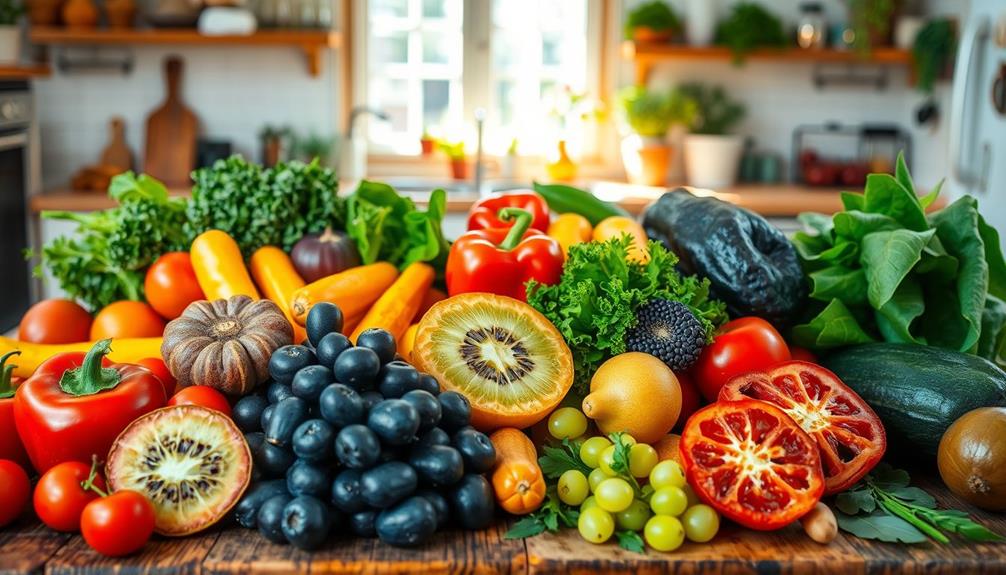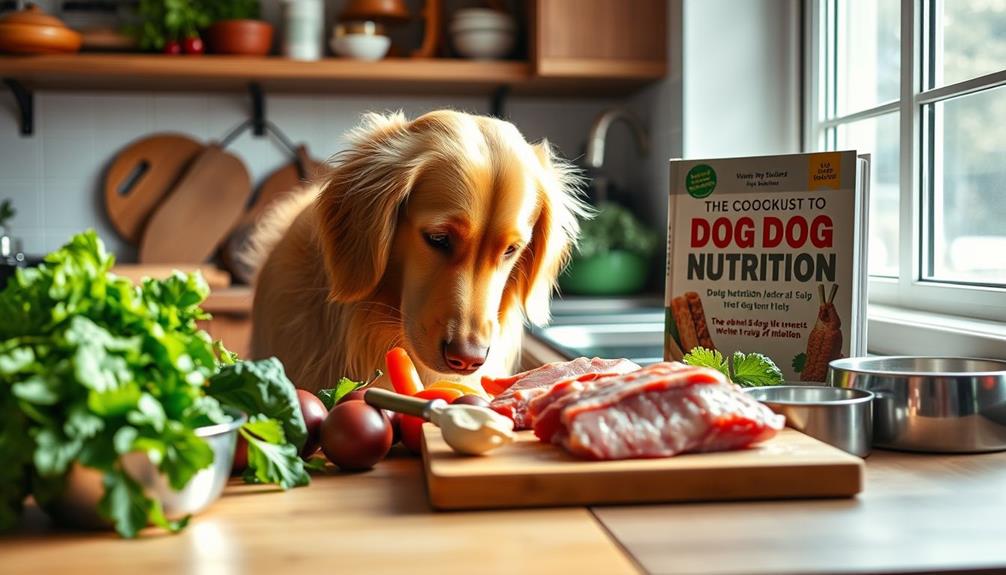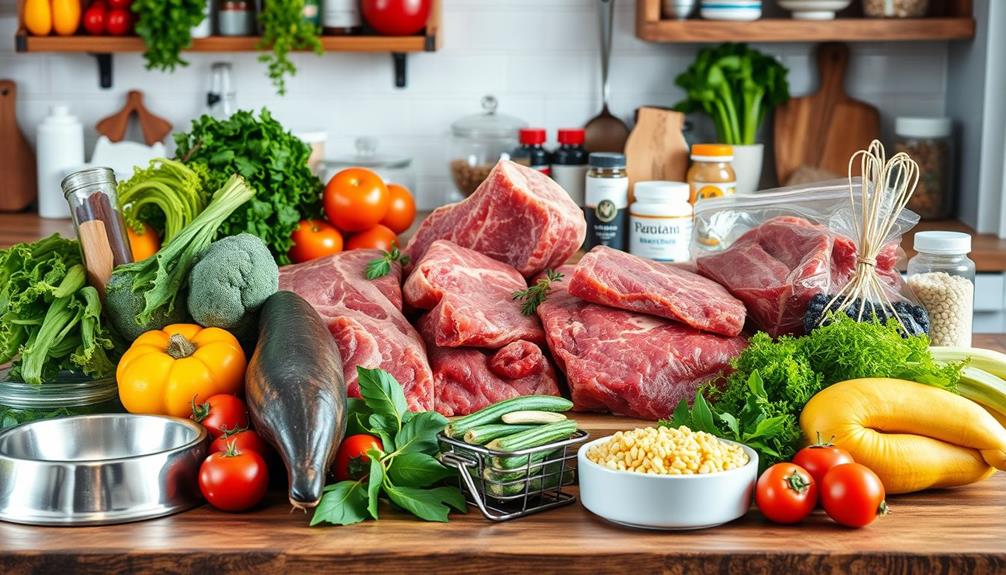The raw food diet, focused on uncooked fruits, veggies, nuts, and seeds, has its perks, like boosting vitamin intake and energy levels. However, experts warn about potential deficiencies in essential nutrients like vitamin B12 and iron. While you might experience initial weight loss, the restrictive nature can complicate long-term adherence, not to mention the practical challenges of meal prep and dining out. Balancing raw foods with cooked options could provide a healthier approach. If you want to navigate these challenges and find ways to optimize your diet, there's more to explore on this topic.
Key Takeaways
- The raw food diet can enhance nutrient absorption and boost energy, but may lead to nutritional deficiencies if not well-planned.
- Common deficiencies include vitamin B12, vitamin D, and omega-3 fatty acids, which can impact overall health.
- Incorporating both raw and cooked foods is recommended to maximize nutrient intake and minimize health risks.
- Weight loss is often seen initially, but the diet's restrictive nature makes long-term maintenance challenging.
- Meal preparation can be time-consuming and costly, potentially complicating adherence and social dining experiences.
Overview of the Raw Food Diet
The raw food diet, centered around eating uncooked and unprocessed foods, has gained popularity for its emphasis on fresh fruits, vegetables, nuts, seeds, and sprouted grains. This approach to eating typically limits food preparation methods to juicing, blending, dehydrating, soaking, and sprouting, ensuring you enjoy a variety of flavors while avoiding cooked foods.
Most followers consume 75%-80% of their daily intake as plant-based foods, but some include raw animal products like unpasteurized dairy and raw eggs. Advocates highlight benefits such as enhanced nutrient absorption and increased energy levels due to the natural enzymes present in raw foods, which can further promote overall health benefits of raw food.
While many proponents claim health benefits such as increased energy and weight loss, experts often view the raw food diet as highly restrictive. This can lead to nutritional deficiencies, particularly in essential nutrients like vitamin B12, vitamin D, iron, and calcium. It's vital to plan your meals carefully to avoid these pitfalls.
As you consider adopting this diet, it's wise to heed expert opinions on its practicality and sustainability. Balancing the allure of raw foods with the need for a well-rounded nutritional profile can be challenging, making it essential to research and consult professionals for guidance. Before making any drastic changes to your diet, it’s important to gather as much information as possible. Consider speaking with a registered dietitian or nutritionist who can provide personalized recommendations based on your individual health needs and goals. Additionally, diving into freezedried raw food facts can offer valuable insights into the nutritional benefits and potential drawbacks of this eating style. Armed with knowledge and expert guidance, you can confidently decide whether a raw food diet is the right choice for you.
Health Benefits and Risks
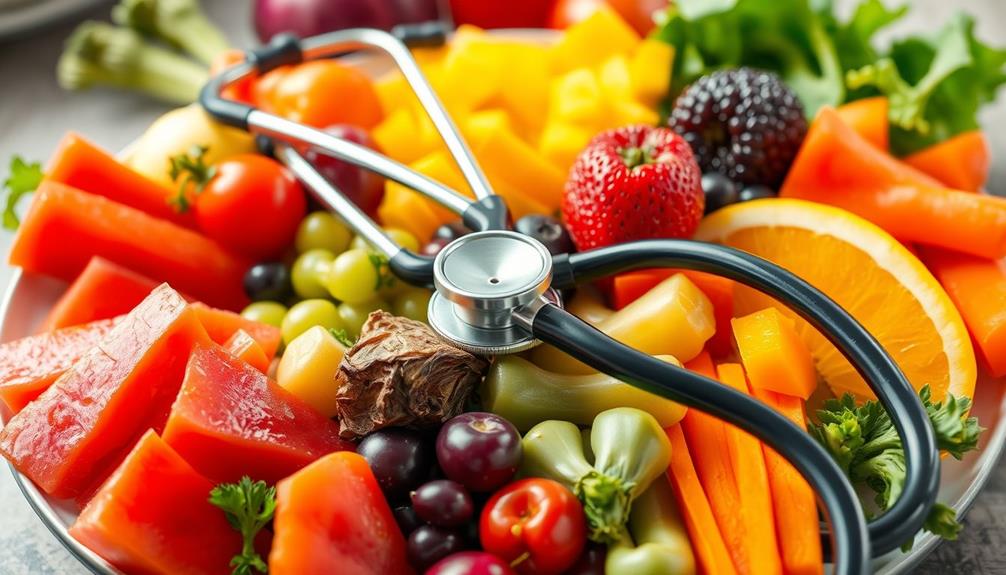
When you consider a raw food diet, you're likely drawn to its nutrient-dense fruits and vegetables that can boost your energy and skin health.
Incorporating foods rich in antioxidants, such as celery juice, can further enhance these benefits.
However, it's essential to recognize the potential for nutrient deficiencies and the risks associated with consuming raw animal products.
You'll also want to think about how sustainable weight loss can be when adhering to such a restrictive eating pattern.
Nutrient Density Considerations
Embracing a raw food diet can lead to a boost in nutrient density thanks to the abundance of fruits and vegetables, which are packed with essential vitamins, minerals, and antioxidants. However, it's important to take into account the trade-offs. While you enjoy the high fiber content and lower calorie density, you might face nutrient deficiencies, particularly in protein, vitamin B12, vitamin D, calcium, and iron.
| Nutrient | Importance |
|---|---|
| Vitamins & Minerals | Essential for body function |
| Nutrient Density | Influences overall health |
| Food Variety | Prevents boredom and promotes compliance |
Cooking enhances the bioavailability of certain nutrients, such as lycopene in tomatoes, which diminishes in raw forms. Additionally, the restrictive nature of the raw food diet can limit food variety, potentially leading to disordered eating patterns. You should also be cautious about consuming raw animal products, as they pose significant health risks due to bacterial contamination. Balancing the raw food diet with cooked options can help you maximize nutrient density while minimizing health risks.
Potential Deficiencies and Risks
Many people on a raw food diet frequently encounter potential deficiencies and health risks due to the restrictive nature of their eating habits. One of the most concerning aspects is the lack of vitamin B12 and vitamin D, both vital for overall health.
By cutting out animal products and cooked foods, you're likely to face nutritional deficiencies in calcium, iron, and omega-3 fatty acids as well. Additionally, it's important to take into account the role of hydration and a balanced diet in maintaining overall health, as highlighted in gout nutrition recommendations.
Moreover, a raw food diet can lead to insufficient protein intake, which may hamper muscle maintenance and overall well-being. While you might be focused on fresh fruits and vegetables, the limited food variety can make sticking to this diet challenging, often resulting in boredom and non-compliance.
Another significant concern is the potential presence of harmful bacteria in raw animal products like dairy, eggs, and meat, which pose considerable health risks, including foodborne illnesses.
Cooking can enhance the bioavailability of certain nutrients, emphasizing the importance of a balanced diet. Consequently, it's vital to weigh these potential deficiencies and health risks against the benefits of a raw food diet before committing to such a restrictive regimen.
Weight Loss Sustainability Issues
Weight loss on a raw food diet often comes quickly, with individuals shedding an average of 8.4 pounds over about seven months. However, the sustainability of this weight loss raises significant concerns. The raw food diet is highly restrictive, which can make it difficult for you to maintain your weight loss long term. Experts warn that such restrictions may lead to disordered eating patterns, pushing you towards unhealthy relationships with food.
Additionally, a lack of a well-balanced budget for nutrition can exacerbate these issues, as individuals may not prioritize crucial food groups.
Moreover, while you might notice initial weight loss benefits, the diet's focus on raw foods can result in nutritional deficiencies, particularly in essential nutrients like vitamin B12 and iron. These deficiencies can create health risks that hinder your overall well-being and sustainable weight management.
Additionally, the impracticality of adhering to a raw food diet—especially during social dining or due to time-consuming meal preparations—can complicate long-term maintenance.
With limited scientific support for the raw food diet's effectiveness, it's important to weigh expert opinions before committing. In short, while the promise of quick weight loss is tempting, the long-term sustainability and health implications mightn't be worth the risk.
Nutritional Considerations
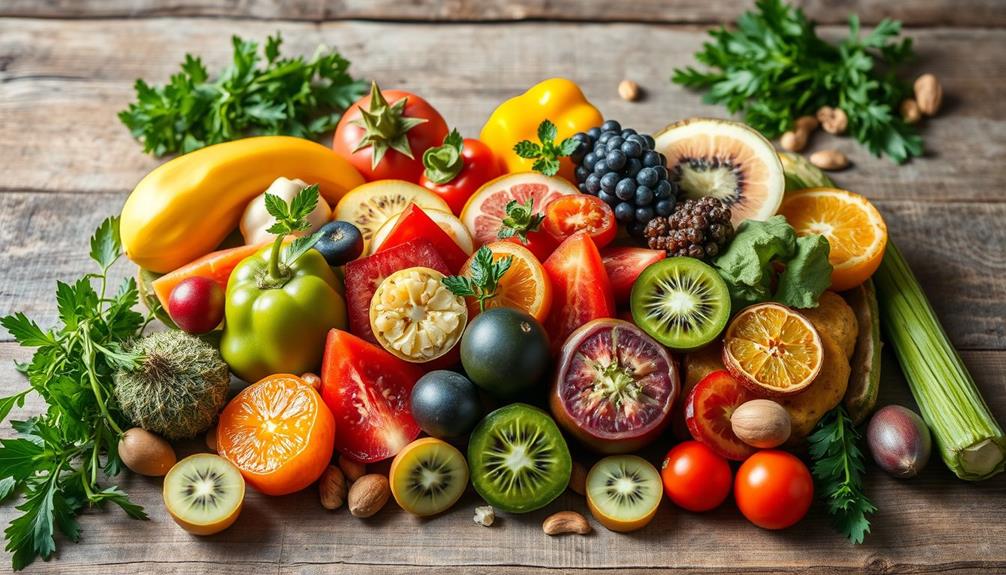
When you consider a raw food diet, it's vital to recognize the risks of nutrient deficiencies, particularly in vitamin B12, iron, and protein.
Regular screenings, such as mammography guidelines, can help catch potential health issues early, just as a balanced diet helps maintain overall health.
While increasing your intake of fruits and vegetables can boost your vitamins and minerals, it's not enough to guarantee you're getting everything your body needs.
A variety of foods is essential to maintain nutritional balance and support your overall health.
Nutrient Deficiencies Risks
Following a raw food diet can pose significant risks for nutrient deficiencies if you don't plan your meals carefully. One major concern is vitamin B12, which is primarily found in animal products. A strict raw food diet often lacks this essential vitamin, increasing your risk for anemia and neurological issues.
Additionally, you might struggle to meet your protein intake needs, vital for muscle maintenance and overall health, as many plant-based proteins are less bioavailable than those from cooked foods. This nutrient deficiency issue is particularly concerning, as proper key domains of development in psychology highlight the importance of nutrition in emotional and psychological growth.
Other important nutrients like vitamin D, iron, calcium, and omega-3 fatty acids can also be underrepresented in a raw food diet, leading to long-term health risks. The restrictive nature of this diet, combined with limited food options, complicates nutritional adequacy.
If you're not careful, boredom with your meal choices could result in non-compliance, further exacerbating nutrient deficiencies.
Moreover, cooking can enhance the bioavailability of certain nutrients, like lycopene in tomatoes and beta-carotene in carrots, which might go under-consumed in a strictly raw approach.
Prioritizing a well-rounded meal plan is essential to mitigate these risks and support your health.
Importance of Variety
Incorporating a variety of foods into your raw food diet is crucial for maintaining ideal health. A limited range of raw foods can lead to nutritional deficiencies, especially in critical areas like protein, vitamin B12, iron, and omega-3 fatty acids. To avoid these pitfalls, you need to embrace a diverse selection of fruits, vegetables, nuts, and seeds, ensuring a balanced intake of both macronutrients and micronutrients.
Additionally, incorporating essential oils for overall wellness can enhance your nutritional routine and contribute to your overall health.
While raw foods are nutrient-dense, remember that cooking enhances absorption of certain essential nutrients, such as lycopene and beta-carotene. By including some cooked options, you can greatly improve nutrient bioavailability, promoting long-term health. This approach also helps keep your meals interesting, which is crucial since a monotonous diet can decrease adherence over time.
Experts stress the importance of variety in food choices not just for avoiding deficiencies but also for achieving a well-rounded diet. By diversifying your raw food intake, you can better support your body's nutritional needs and enjoy a more satisfying culinary experience.
Ultimately, balance and variety are key to thriving on a raw food diet.
Weight Loss Potential
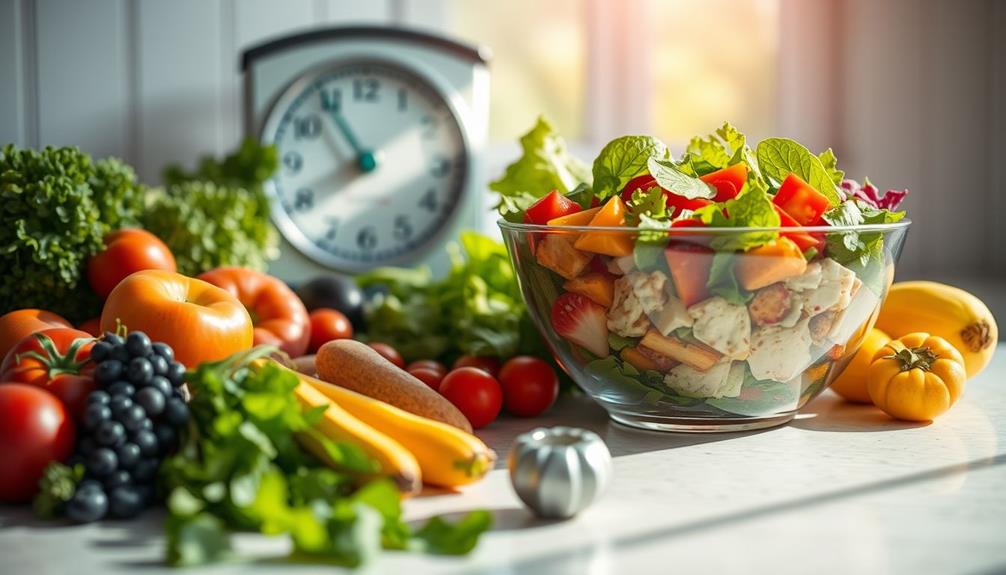
The raw food diet can lead to significant initial weight loss, with studies indicating an average reduction of 8.4 pounds over about six months. This weight loss is often attributed to the diet's low-calorie nature and high consumption of fruits and vegetables. However, while you might shed pounds quickly, the long-term sustainability of this approach is questionable.
| Pros of Raw Food Diet | Cons of Raw Food Diet |
|---|---|
| High in fruits and vegetables | Restrictive nature |
| Potential for initial weight loss | Nutritional deficiencies |
| Low-calorie options | Inadequate protein intake |
| Might promote health maintenance | Risk of disordered eating |
| May encourage mindful eating | Difficult adherence long-term |
Experts caution against using the raw food diet solely for weight loss or diabetes management. Its restrictive nature can hinder your ability to maintain a balanced diet, leading to potential nutritional deficiencies. Additionally, inadequate protein intake may negatively impact muscle maintenance, which is vital for overall health. Ultimately, while the raw food diet can yield short-term weight loss, its long-term effectiveness and health impacts merit careful consideration.
Practical Challenges

Steering through the raw food diet isn't always straightforward, as it presents several practical challenges that can make adherence difficult.
For starters, meal preparation often requires extensive preparation methods like blending, dehydrating, and sprouting, which can be overwhelming for beginners. This time-consuming process can deter you from sticking to the diet, especially when considering the importance of content quality and topical authority in maintaining motivation.
Additionally, the high costs associated with purchasing organic ingredients and essential kitchen appliances, such as high-end blenders and dehydrators, can make the diet less accessible.
You might also find that the raw food diet demands advanced culinary skills, which could be intimidating if you're a beginner. The steep learning curve for meal preparation can add to your frustration.
Limited food options can further complicate things. When dining out, many restaurants may not accommodate your strict dietary requirements, leading to potential social isolation, especially during gatherings or events with cooked food.
All these factors can make it challenging to maintain a raw food lifestyle while enjoying social interactions.
Expert Recommendations
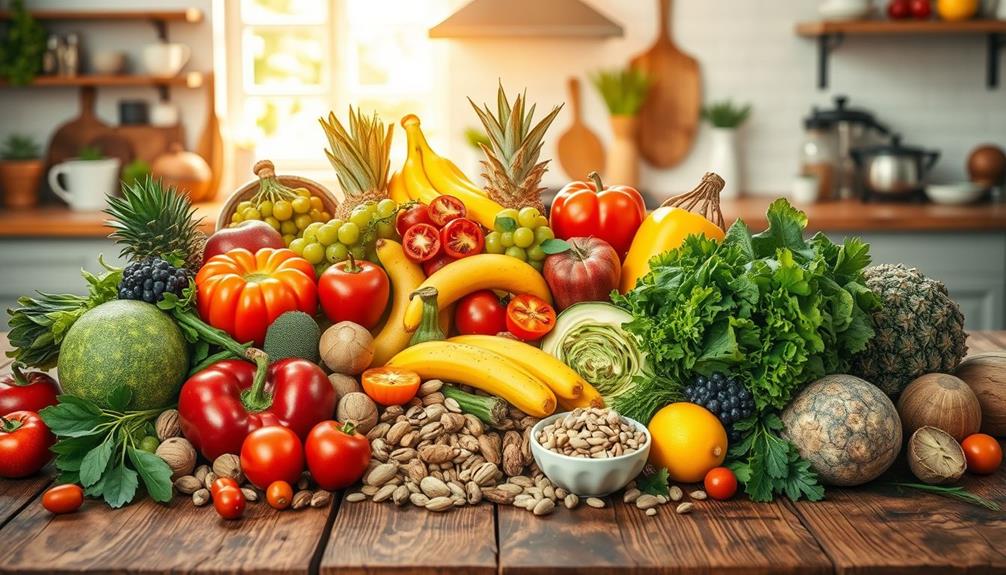
While many people are drawn to the raw food diet's health benefits, experts suggest balancing it with cooked foods to guarantee you're meeting all your nutritional needs. A strictly raw food diet can lead to nutrient deficiencies, particularly in vitamin B12, vitamin D, iron, and calcium.
Additionally, understanding the financial implications of maintaining a specific diet, especially if it requires special foods, can be essential for overall well-being. Cooking foods can enhance nutrient bioavailability, making essential vitamins and minerals more accessible.
Here are some expert recommendations to take into account:
- Incorporate both raw and cooked foods for a balanced nutrient intake.
- Be mindful of food safety, especially with raw animal products, to avoid foodborne illnesses.
- Assess the sustainability of your diet to prevent disordered eating patterns.
- Consult with nutrition professionals for personalized dietary guidance.
- Monitor for potential health risks associated with long-term adherence to a raw food diet.
Ultimately, experts advise against strict raw food diets. Mixing raw and cooked foods can help you enjoy the benefits of both while minimizing the risks associated with nutrient deficiencies and health concerns.
A varied diet supports long-term health and well-being.
Frequently Asked Questions
Is Raw Diet the Healthiest?
While you might think a raw diet's all about health, it can lead to nutrient deficiencies and be hard to stick with. Cooking can actually enhance nutrient absorption, making balance in your diet essential for overall well-being.
What Are the Negatives of the Raw Food Diet?
Oh, you think munching on lettuce will make you a superhuman? Well, brace yourself for nutrient deficiencies, digestive dramas, and foodborne illnesses. Plus, that restrictive lifestyle might just turn you into a disordered eating artist!
Do Vets Agree With Raw Diet?
Most vets don't support raw diets for pets. They highlight risks like bacterial contamination and nutritional imbalances. If you're considering this diet, consult your veterinarian to guarantee your pet's health and safety.
What Is the Theory Behind the Raw Food Diet?
You might think cooking enhances food, but the raw food diet insists it destroys nutrients. This theory claims uncooked foods boost nutrient absorption and digestion, keeping everything in its "natural" state for ideal health.
Conclusion
In the garden of health, the raw food diet can be a vibrant flower, blooming with benefits and beauty. But, like any garden, it requires care and knowledge to thrive. You must navigate the weeds of nutritional gaps and practical challenges. As you wander this path, listen to the wise whispers of experts, tending to your needs with balance and variety. Embrace the journey, and you'll discover what truly nourishes your body and spirit. Explore the world of raw food benefits, from increased energy and improved digestion to clearer skin and a strengthened immune system. By incorporating a variety of fruits, vegetables, nuts, and seeds into your diet, you’ll experience the vibrant flavors and vibrant health that come with consuming living, nutrient-rich foods. With dedication and an open mind, the raw food diet can lead you down a path toward greater wellness and vitality.

